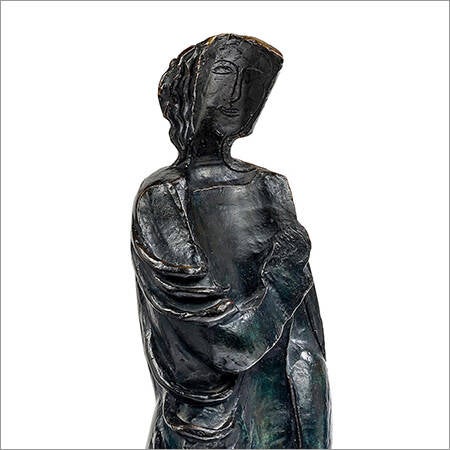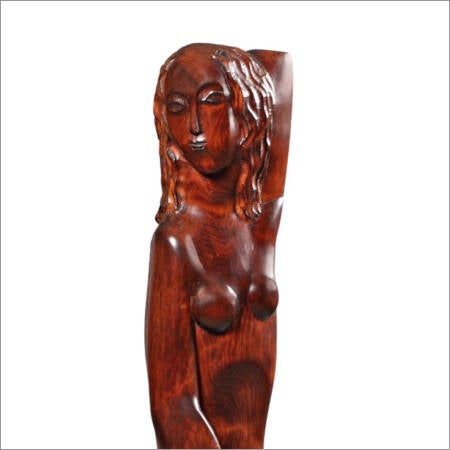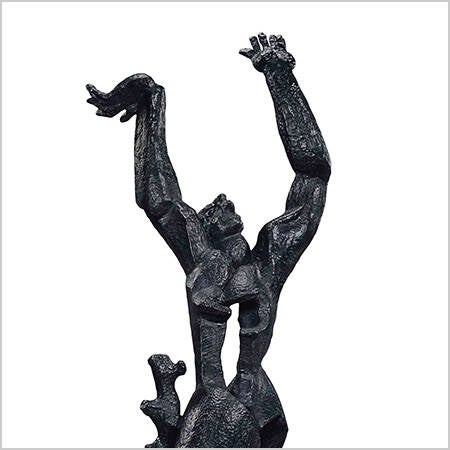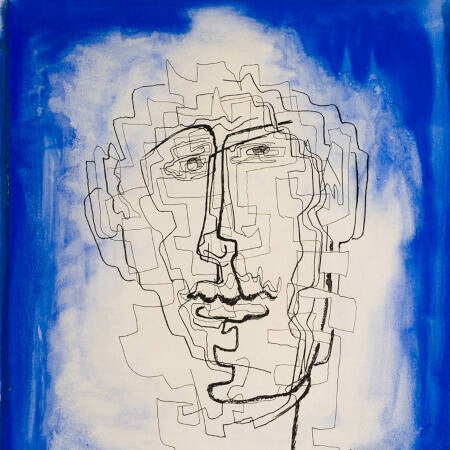Ossip Zadkine (1888-1967) - Wood, Stone, Bronze Sculptures and Works on Paper - 1913 - 1966
Jewish sculptor Ossip Zadkine was born in Vitebsk, Belarus in 1888. Zadkine left his country in 1906 to go first to England where he continued to learn to sculpt and then, in 1910, to Paris, France. At the same time, he re-drafted the story of his early life and beginnings as a sculptor, to minimise the importance of his Russian Empire heritage.
Zadkine's arrival in Paris
Zadkine arrived in the autumn of 1910 in Paris. At the end of 1910 he enrolled in the class of sculptor Jean Antoine Injalbertat at the ‘École nationale supérieure des beaux- arts’. In 1911 he became involved in the Russian Artists Association within La Ruche, where he lived briefly from around 1910-11. Zadkine also attended the Académie Russe in Montparnasse which was set up by artist Marie Vassilieff in 1908. Vassilieff displayed one of Zadkine’s wooden sculptures in her studio. In 1916 Zadkine signed up and joined the Second Foreign Infantry Regiment of the French Foreign Legion where he served as a stretcher bearer for 20 months. During this time he made a series of war drawings, a fine example of work from this period is a watercolor and ink on paper from 1917 discovered by the Zadkine Research Center in 2005 in Switzerland. View Ossip Zadkine (1888-1967) - Wood, Stone, Bronze Sculptures and Works on Paper - 1913 - 1966
Zadkine receiving recognition
In 1917 Ossip Zadkine had returned to Paris, invalid and eligible to apply for French citizenship. Zadkine did not have a dealer to sell his work, he dealt with all his sales himself but later he employed dealers in Brussels, London, and New York. Zadkine’s wooden works were exhibited alongside works by Diego Rivera and Manuel Ortiz de Zarate at Galerie Branger between March and May 1919.
By 1920, Zadkine was one of only three avant-garde sculptors still exhibiting in the Salon d’automne and he continued to send large numbers of works to this Salon and to the Indépendants well into the mid 1920s, and received a regular amount of press, and increased recognition. In May 1920 Zadkine held his first solo exhibition in his studio at rue Rousselet, as well as sending works to the Indépendants and the Salon d’automne.
Building professional relationships
Zadkine’s first works with a Cubist aesthetic date from 1922, an example is ‘Couple et enfant’ dated 1922. During this time Zadkine worked tirelessly at pursuing new professional relationships, to get his works exhibited wherever possible. His contacts with people in Belgium, the Netherlands, the United States and Japan were all established by Zadkine before 1922. In November 1928 Zadkine had his first solo exhibition in Britain, at Tooth’s Gallery London. A large figurative wooden work 'Femme Assise' (destroyed) was
photographed in the painter Edward Wadsworth’s garden, where he had commissioned it. During the 1930s Zadkine had several exhibitions in the United States. The American industrialist Bernard Davis, which he met in 1927 in Paris was his biggest supporter in the pre-War years. Zadkine's first visit to the United States was in 1937, the occasion was a large retrospective at The Brummer Gallery in New York. One of two large plaster models, titled 'Homo Sapiens', which were being cast in Paris for the New York exhibition was recently discovered in Philadelphia by the Zadkine Research Center.
Exile in the United States
At the beginning of the Second World War, Zadkine fled to the USA where he stayed in New York City. In the USA Zadkine had a relationship with American artist Carol Janeway (1913-1989) and he created several portraits of her. During his stay in the United States, many of his works became gloomy and depressed, he missed his homeland France.
Zadkine's war monument The destroyed city in Rotterdam
Zadkine's best known work is probably the war memorial in Rotterdam, The Netherlands titled 'La ville detruite' or ‘The destroyed city’. According to Zadkine, he got the inspiration for this sculpture after he saw the ruins of destroyed city of the Rotterdam in 1947. This monumental bronze statue is a 650 cm high Dutch national monument and was unveiled in 1953. Zadkine attended this unveiling with his good friend and patron from the Netherlands Hendrik Wiegersma (1891-1969).
Ossip Zadkine was fascinated by the Dutch painter Vincent van Gogh (1853-1890). During the 1950s and 1960s he made various sculptures and works on paper with the subject of Van Gogh and created large monuments in Zundert, the Netherlands and Auvers sur Oise in southern France.
Source: 'A Russian sculptor abroad: Ossip Zadkine and his works in wood, 1908 – 1937', Cathy Corbett























































